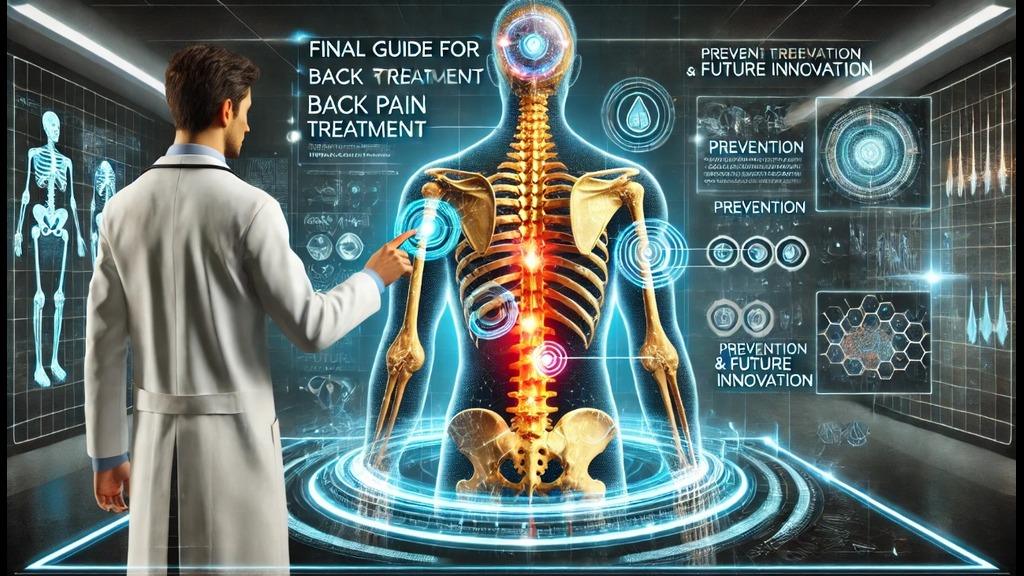Do you know that more than 80% of adults experience back pain at some point in their lives? Whether he has been sitting for a very long time, lifting heavy objects incorrectly, or suffering from inherent medical conditions, back pain is one of the most common reasons for a leaving workday and a doctor’s visit. Nevertheless, many people either ignore it or resort to quick reforms that do not address the root cause.
If you are struggling with back pain, this guide is for you. We will detect the best treatment, actionable pain relief strategies, and emerging therapy that can change the way you manage back pain forever.
Why back pain treatment matters
Effect of untreated back pain
Ignoring back pain can cause serious complications, including:
- Chronic pain that disrupts daily life.
- Low mobility and flexibility, leading to muscle weakness
- Mental health conflict, because pain is closely associated with stress and anxiety.
- Expensive surgery or long-term drug dependence is left unchanged.
- Initial intervention is important. With proper treatment, most cases of back pain can be resolved or significantly reduced without invasive procedures.
The major treatment for back pain
1. Physical therapy: Foundation of Recovery
A structured physical therapy (PT) program can strengthen the muscles and improve posture.
General PT techniques include:
- Core strengthening exercises (eg, plank, bridge)
- Stretching routine for flexibility (eg, hamstring stretch, yoga pose)
- Asana improvement training to relieve tension in the spine
💡 Tip: The American Physical Therapy Association advises PT as the first line of treatment before considering surgery.
2. Chiropractic Care: Spinal adjustment for pain relief
Chiropractic adjustment can help relieve wrong joints and improve movement. According to a study published in the Journal of the American Medical Association, chiropractic care can be effective as a traditional treatment for chronic low back pain.
3. Medications: When pain management is necessary
While the drug should not be used for first aid, it can help manage pain in severe cases:
- NSAIDs for inflammation relief (eg, ibuprofen, naproxen).
- Muscle relaxation to reduce cramps.
- Topical pain relievers for local relief (capsaicin cream, menthol gel).
🚨 Caution: Long-term use of pain drugs can cause dependence. Always consult a doctor before use.
4. Summer and Cold Therapy: Simple, Effective, and Cheap
Cold therapy (ice pack) reduces inflammation and listens to severe pain.
Heat therapy (heating pad, hot bath) relaxes stressful muscles and improves blood circulation.
5. Alternative remedies: Holistic approaches that work
Acupuncture: Research by Harvard Medical School suggests that pain symptoms in acupuncture can be significantly reduced.
Massage therapy: Improves circulation, reduces stress, and helps promote relaxation.
CBD and herbal remedies: Some individuals report relief using CBD oils, turmeric supplements, or Arnica gels.
Step-by-step guide for managing back pain at home
Improve your posture –
- Maintain a neutral spine while sitting and standing.
- Use an ergonomic chair and desk setup when working for a long time.
- Avoid slapping or humping on equipment.
- Strengthen the main muscles.
- Attach in exercises such as yoga, pilates, or lightweight training.
- Try cardio activities such as swimming or walking.
Sleep smart –
- Use a medium-firm mattress to support the appropriate spinal cord.
- Lie on your side with a pillow between your knees.
- Keep a healthy weight.
- Additional weight, especially in the abdomen, puts pressure on the lower back.
- A balanced diet rich in anti-inflammatory foods (leafy greens, fatty fish, nuts) can reduce the pain.
Limit heavy lifting –
- Always lift with your feet, not your back.
- Suddenly, avoid jerking movements while picking up items.
Real-world case study: Overcoming chronic back pain without surgery
Meet David: A Success Story
David was suffering from lower back pain due to being a 45-year-old office worker, poor posture, and a sedentary lifestyle. Initially, he trusted pain relievers, but relief was temporary. After consulting a physical therapist, he launched a structured exercise program, improved his seating posture, and regularly used heat therapy.
Result? Within three months, David reported a 70% decrease in pain and avoided the need for aggressive treatment. His story proves that simple changes and stability can lead to permanent relief.
Common mistakes to avoid treating back pain
1. Until it becomes old until it becomes old
Long-term damage can occur for a very long wait to address back pain.
2. More dependence on medicine 💊
Pain relieving mask symptoms but do not cure the root cause.
3. Lack of movement and stretching 🏃
The rest is important, but prolonged inactivity can spoil back pain.
4. Poor mattress and sleep habits
A bad mattress can contribute to a spinal misalignment and can increase discomfort.
Future of treatment of back pain
1. AI and wearable technology for posture improvement
Tools such as Honest Go and Lumo Lift provide real-time posture reactions to prevent stress.
2. Rejuvenate Medical and Stem Cell Therapy
Stem cell treatments are being discovered as a way to repair damaged discs and revive tissues.
3. Virtual reality (VR) for pain management
VR-based therapy programs are being tested to resume brain pain perception.
4. Minimum invasive procedures
Techniques such as laser spine surgery and radiofrequency ablation (RFA) offer quick recovery times and fewer complications compared to traditional surgery.
Conclusion: Control your back pain today
Back pain may be weak, but with the right treatment plan, relief is possible. Whether it is physical therapy, lifestyle changes, or emerging medical innovation, there are many ways to control your spinal health.
✅ Try simple home remedies like posture improvement and stretching. Consult a physical therapist or a chiropractor for personal guidance. Pain should be updated on new remedies and innovations in back pain management.
Prioritizing your back health through small daily changes can lead to significant relief from back pain.




